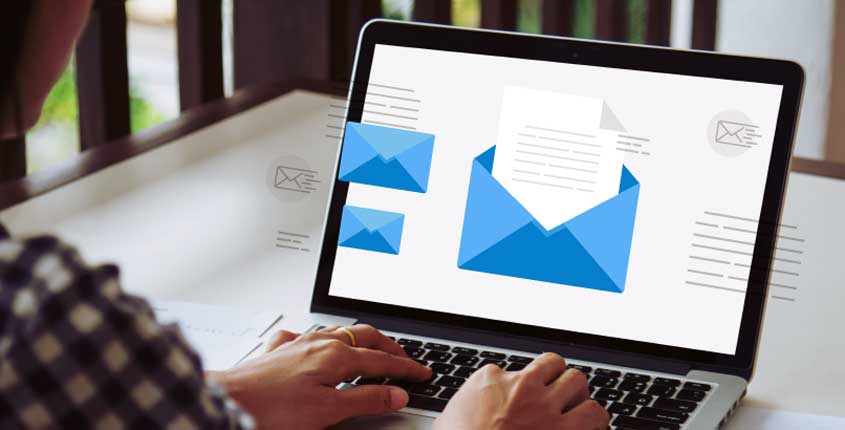The Power of Personalized Emails in Email Marketing – The Truth

Email marketing is a powerful tool for businesses to reach customers and drive sales. However, with the rise of spam filters and inbox clutter, it’s becoming increasingly difficult to cut through the noise and make an impact. One of the most effective ways to stand out is through personalization.
Personalized emails are more relevant and engaging to recipients, resulting in higher open and click-through rates. According to a study by Experian, personalized emails had a 29% higher open rate and a 41% higher click-through rate than non-personalized emails. But what exactly is personalization and how can businesses effectively incorporate it into their email marketing strategy? Let’s explore.
What is Personalization in Email Marketing?
Personalization in email marketing is the practice of tailoring the content and messaging of an email to an individual recipient based on their unique characteristics and behavior. This can include their name, location, past purchases, browsing history, and more.
Personalization can be as simple as including the recipient’s name in the subject line or greeting, or it can be more complex, such as dynamically populating product recommendations based on their browsing history or purchase behavior. The key is to use data and insights to create a personalized experience that resonates with the recipient.
The Benefits of Personalized Emails in Email Marketing
Increased Open Rates
Personalized emails have a higher chance of being opened because they catch the recipient’s attention and make them feel valued. When a person sees their name or other personalized details in the subject line, they’re more likely to open the email out of curiosity or interest.
Higher Click-Through Rates
Personalized emails also result in higher click-through rates because the content and messaging are more relevant to the recipient’s interests and needs. When a person feels that an email is tailored specifically to them, they’re more likely to take action and engage with the content.
Improved Customer Experience
Personalized emails provide a better overall customer experience because they feel more human and less like a generic marketing message. When a person receives an email that speaks to their interests and needs, they feel understood and valued by the brand.
Increased Revenue
Personalized emails can also lead to increased revenue for businesses. When a person receives an email with personalized product recommendations based on their past purchases or browsing behavior, they’re more likely to make a purchase. In fact, a study by Epsilon found that personalized emails had an average open rate of 29% and a click-through rate of 5.3%, leading to a 6x higher transaction rate and a 41% increase in revenue per email sent.
How to Incorporate Personalization into Email Marketing
Collect Data
The first step in incorporating personalization into your email marketing strategy is to collect data on your subscribers. This can include their name, location, past purchases, browsing history, and more. The more data you have, the more personalized and relevant your emails can be.
Segment Your Audience
Once you have collected data, segment your audience into groups based on shared characteristics or behaviors. This can include demographics, past purchases, engagement levels, and more. By segmenting your audience, you can create targeted and personalized emails that resonate with each group.
Use Dynamic Content
Dynamic content allows you to create personalized emails that are unique to each recipient. This can include dynamically populating product recommendations based on their past purchases or browsing behavior, or including personalized images and messaging based on their location or interests.
Personalize the Subject Line and Greeting
Personalizing the subject line and greeting is a simple but effective way to incorporate personalization into your emails. Use the recipient’s name or other personalized details to catch their attention and make them feel valued.
Test and Optimize
Personalization is not a one-size-fits-all approach, and what works for one audience may not work for another. That’s why it’s important to test and optimize your personalized email campaigns to ensure that they resonate with your audience and drive results. This can include A/B testing different subject lines, messaging, and content to see what works best.
Don’t Overdo It
While personalization is important, it’s also important not to overdo it. Bombarding your subscribers with overly personalized emails can come across as creepy or invasive. Strike a balance between personalization and general messaging to ensure that your subscribers feel valued without feeling like they’re being watched.
Examples of Personalized Emails
Abandoned Cart Emails
Abandoned cart emails are a great example of personalization in action. By using data on a customer’s browsing and purchase behavior, businesses can send targeted emails reminding them of items left in their cart and offering incentives to complete the purchase.
Birthday Emails
Sending personalized birthday emails to subscribers is a simple but effective way to make them feel valued and appreciated. By including a special offer or discount, businesses can encourage subscribers to make a purchase and celebrate their special day.
Location-Based Emails
Using data on a customer’s location, businesses can send personalized emails with information on local events, weather updates, or promotions specific to their area. This type of personalization shows that businesses are paying attention to their customer’s needs and interests.
Product Recommendation Emails
Product recommendation emails are a great way to use past purchases and browsing behavior data to send personalized product recommendations to customers. By tailoring the recommendations to each customer’s unique interests and needs, businesses can increase the chances of a purchase.
Conclusion
Personalization is a powerful tool for businesses to make their email marketing campaigns more engaging and effective. By using data and insights to create personalized experiences for their subscribers, businesses can improve open and click-through rates, provide a better customer experience, and increase revenue. Incorporating personalization into email marketing takes time and effort, but the results are well worth it. With the right strategy and approach, businesses can stand out in the inbox and make a lasting impact on their customers.
Posted on: April 14, 2023